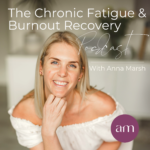
Shownotes
We make energy in the presence of oxygen and this means that the body must be able to optimally take oxygen in through the breath, transport it around the body and then into the cells. Any breakdown in this supply chain can be a roadblock to the production of the body’s energy currency ATP and this can be experienced as fatigue. In this episode Anna discusses red flags and what tests, foods, supplements and general lifestyle practises may be helpful to optimise your body’s oxygenation and energy production.
Useful links:
Website: https://annamarsh.co.uk/
Instagram: https://www.instagram.com/anna_marsh_nutrition/
Fatigue Recovery Quiz: https://app.annamarsh.co.uk/quiz
Oxygenation and Fatigue
Hello, and welcome back to the chronic fatigue and burnout recovery podcast. I am your host Anna Marsh, and we will focus on all things oxygenation in this podcast today. So what is oxygenation? Why is it important for your fatigue recovery journey? If you listen to the previous episode on blood sugar, you probably heard me say that fatigue at the end of the day is the end point of poor ATP production.
ATP is the body’s energy currency. How the body makes ATP or how the body makes energy is dependent on many, many different factors, some of which I covered in a previous episode where I talked about the causes of fatigue. All those causes, which I discussed, result in the endpoint of poor ATP production.
Poor oxygenation could be a contributing factor, from poor ATP to poor energy production. So what I want to cover in this episode today is what we want to be thinking about when we consider that our body may or may not be oxygenating well. When I look at these kinds of concepts like blood sugar and oxygenation, these are what I would call the low-hanging fruit.
I call them the low-hanging fruit because they’re accessible and easy to test for. They’re easy to identify, that I wouldn’t say, easy to address, necessarily, but fairly easy to address, fairly straightforward to address, and inexpensive to address. When I’m working with a client, either one on one in one of my one-on-one packages, or even if I’m doing a one-on-one consultation as part of my group program, then what I’m doing is I’m asking these basic questions, how is this person’s blood sugar?
Is this person oxygenating well? These are very easy and accessible things we can address as we work towards the entire big picture of ATP and energy production. Health and well-being are created when the body has the energy for all the systems to function well.
When we think about oxygenation, what do we want to think about? What do you need to know? Well, one of the first things I like to lead is that we make the most energy in the presence of oxygen. Energy is made in the cell’s mitochondria; we make the most energy and ATP when we burn fat for fuel, and we burn fat for fuel in the presence of oxygen. So we need oxygen to get through our nose, mouth, lungs, and bloodstream.

It needs to be transported through the bloodstream, infiltrate into the cells, get into the cell’s mitochondria, and then combine with the fat in the cell’s mitochondria to then be used to create energy. There’s a series of steps involved, and any breakdown in those steps will impact how much energy or ATP you can make. We think about it in the context of how you breathe, how you will initially get oxygen out of the air and into the body through the lungs, which requires good breathing practices.
It also requires healthy lung tissue, and your lungs are one of the body’s barriers; we need to transport the oxygen. So we need to know that our transporting molecules or red blood cells are healthy and can do a good job. Then once oxygen is transported through the red blood cells, we also need to make sure we’re moving the body, so the blood is circulating.
We need good circulatory health and oxygen to infiltrate the cells, which means we want healthy cells and healthy cell membranes to support that infiltration process. It’s an entire supply chain, and a breakdown in the supply chain will potentially create a breakdown in energy production, which could contribute to fatigue. So let’s dive into these supply chain steps in more detail.
The first step to consider is how you are breathing. The primary thing that I’m asking what I’m looking for when I speak with my clients is, “Do you breathe through your nose? Or do you breathe through your mouth?” People who breathe through their mouth tend not to oxygenate as well as people who breathe through their nose.
This is where people may lack awareness, not even realize that their mouth is breathing during the day, or perhaps they aren’t conscious of how they breathe during the day, but they’re breathing through their mouth at night. Remember, nighttime is when the body does a lot of its little cleanup jobs, it’s a very important time for rest and recovery and repair, and oxygen is going to be a really important part of that rest, recovery, and repair process. If we’re breathing badly at nighttime, when we’re asleep, the body will not be at an advantage during those restful night hours.
We want to consider nasal breathing. If you are somebody affected by fatigue, nasal breathing should be done 100% of the time. For example, people who exercise at high intensity may need to start using their mouths at some point to breathe.
But that may only be very, very high intensities for a very short time. Most people should be breathing through their nose the entire time, especially if fatigue recovery is a goal, because you shouldn’t be exercising, at least at this point, at an intensity that would encourage you to breathe through your mouth anyway. That can also be a nice way to put a little handbrake on yourself.
If you are a little bit gung ho when it comes to exercise, you can only do it through your nose if you limit yourself to exercise. That’s like applying the brakes a little bit on your exercise intensity. Another thing we may want to consider is breathing very shallowly.
Notice that you very seldom breathe through your belly, and you tend to breathe more into the chest and upper chest, and your breath is very shallow. That’s potentially going to be something that impacts the oxygenation of the body. We tend to do that more so when we’re stressed.
This is where we can see an overlap between oxygenation and the nervous system because when someone’s nervous system is more activated, their breathing may be more rapid, it may be more in the upper chest, versus somebody who is much more centred and grounded and well regulated, they may tend to breathe more into the belly. Here if you’re very stressed, if you’re sitting a lot, if you’re quite hunched over, working at a desk, maybe you want to take some breaks throughout your day where you open up the chest, open up the ribcage, do some nice breathing exercises to encourage good breathing and flow of breath throughout the day. You might also be told that you snore a lot, and maybe a partner complains about your snoring.
If you’re snoring at night, you probably breathe through your mouth. Saying or often yawning throughout the day can also indicate poor oxygenation. Sometimes sighing and yawning can also be a discharge from the nervous system.
So just understanding the difference between the two may be something for another day if you can hear your breathing. Oxygenation is probably not great if it’s very kind of like laboured and raspy. If you experience any nasal congestion, people with it may default to breathing through their mouth.
So if nasal congestion is an issue for you, that’s something you may want to address in your journey towards better oxygenation. What do you do if you identify that your breathing is probably something you could be working on as part of your fatigue recovery journey? If you want to train nasal breathing, that might mean actively working on nasal breathing.

First, when you’re at rest, even just lying down, to begin with. If you find it quite challenging, you could practice nasal breathing by sitting up, then you can practice nasal breathing on a little walk, and then maybe you can integrate it into more intense exercise if that’s something you can do. Because not everybody who’s recovering from fatigue can even walk very much at all, let alone do more intense exercise.
You could use mouth taping at night, get some micropore tape from the chemist, and pop it over to keep your mouth closed at night so you can focus on breathing through your nose. Suppose that feels quite distressing initially and activating for your nervous system. In that case, you could practice mouth taping in the evenings while watching TV, for example, and then build up to the competence to wear some mouth tape at nighttime.
You want to address any underlying nasal issues, very common when there are mould spores in the nose, when there are digestive issues, when there are inflammation issues, maybe if there are food sensitivities, histamine issues, all of that can impact the nasal passages, that is another podcast for another day. But we want to ensure that we’re addressing as much as possible so that you can breathe adequately through your nose. Once we’re breathing, we also want to ensure that the air we breathe is circulated around the body.
That means movement and movement is always a tricky one for people with fatigue because if I think about the spectrum of my clients, I have some clients who may only just be walking to the bathroom and back or the kitchen and back each day, to other clients who are building up their exercise tolerance and getting back into exercising, like a normal human being. So on that spectrum, it’s very broad, and different people have different levels of movement capacity. The guidance I usually give is just little and often within your capacity.
Even if you’re only able to walk to the bathroom and back or the kitchen and back, there might be little movements or stretches that you can do seated or even in your bed to get things moving. You can challenge yourself to do those little walks hourly. For someone who has a greater capacity, it’s not just going to the gym and doing your hour-long workout but taking the stairs, parking your car further away at the supermarket, and building up those 10k steps, not just in one go. But in little intervals throughout the day, you are constantly just working on moving the body.
It’s great, obviously, for blood flow and oxygenation, but also your lymphatic system, getting toxins out of the body. Once we are breathing well and circulating oxygen around the body with our movement practices, we also need to ensure that we’ve got healthy blood cells that will transport the oxygen where it needs to go. That is specifically looking at the red blood cells and the red blood cells being made by the nutrients vitamin B12, folate, iron, and vitamin B6.
There are deficiencies in these nutrients, whether due to poor consumption or you’re consuming enough. Still, you’re unable to digest and absorb these nutrients because of digestive issues, or maybe you’re burning through a lot of these nutrients, and you’re using up a lot because of other imbalances in the body. For example, I won’t talk about imbalances in the biochemical process of methylation today but to give lip service.
If you’re methylating a lot or there are problems with your methylation cycles, you may need these nutrients more. We’ve got various reasons why you may need more of these nutrients. We can begin to identify if there are any issues with the red blood cells and if you perhaps need more of these nutrients for whatever reason by using testing, which your doctor will be able to do for you, which is to look at a full blood count, sometimes also called a complete blood count, it just depends who you’re talking to.
This full blood count will be able to measure your red blood cells, your haemoglobin levels, and your hematocrit levels. Suppose you have low red blood cells, haemoglobin, and hematocrit. In that case, that’s a sign that there can be anaemia in some cases, poor oxygenation, or an inability to oxygenate the body adequately.
But then we need to dig maybe a little bit deeper and work out what the problem is specifically. In this case, we’ll look at some other markers. So the Mean Corpuscular Volume – MCV, the Mean Corpuscular Hemoglobin – MCH, the MCHC, the Mean Corpuscular Hemoglobin Concentration, and the RDW, The Red Cell Distribution Width. If there are changes in these markers, that can start to suggest this is an iron problem versus a B vitamin problem.

Sometimes we can have both, so we need to double-check these things, which I’ll talk about in a moment. But if you have an elevation in these markers, and your MCD, your MCH, or your MCHC, that can indicate there may be a need for B12, folate, or vitamin B6. If these markers are low, that can then suggest that maybe there’s an iron issue.
The only thing is what happens if you need B vitamins and iron, we can’t always tell exactly from these markers, which is why we then want to look at a few other markers as well. If you’ve tested your full blood count, you can also test your ferritin levels, so ferritin is your body’s iron stores. Now the tricky thing about ferritin is that the reference range is huge.
Therefore, sometimes I have a lot of clients who are within range but right at the bottom of the reference range. What you want to know about ferritin, especially if you are experiencing fatigue, is that the ideal amount is about 50 micrograms per litre. The reference range is 10 to 122 micrograms per litre.
Because it’s so broad, it’s really important to know what you’re aiming for. Of course, if yours is maybe 40, or 55, it’s probably not such a big deal. But sometimes, I have clients with a ferritin level of 12, and the bottom of the reference range is 10.
Then we know we want to bump their ferritin levels up closer to the middle of the reference range. That’s what we want to know about ferritin. If ferritin is very high, that can sometimes indicate inflammation in the body.
If I see a very high ferritin count, I’ll usually also want to see one of the other iron markers. We can have the total iron binding capacity, which are other markers your doctor can run for you. Or you can always use a private testing company like Medichecks, for example.
Sometimes those markers can also start to indicate if there’s elevation and iron, which can sometimes indicate inflammation. So with Veriton, even though the reference range is so broad, we don’t want to be too high up on the reference range. We don’t want to be too low down on the reference range, and about 50 is a good place.
But you may have also just heard me say that if we have an increase in our MCV, MCH MCHC, that can be due to the need for B12, folate, or vitamin B6. But how do we know which one? Is it all of them? Is it just one? Is it two of them, but not the other one?
This is where I like to dig deeper with clients and recommend organic acids testing. Organic acids testing will tell us about the functional need for these nutrients. Sometimes your doctor will run maybe a serum B12 or serum folate.
These levels often come up normal with clients just because it’s a snapshot of how much B12 or folate is circulating in the bloodstream at that point in time. But it’s not telling us how much it’s getting into the cell and doing the job it’s supposed to do. This is where organic acids can give us that information.
I’ll often see clients with normal serum folate or normal serum B12, and then we’ll do the organic acids, and they might need more folate, or they might need more B12, or they might need more B6. In case it’s relevant, these specific markers are the mevalonic acid best indicator of the need for B12. Figlu, F-I-G-L-U, is the best indicator of the need for folate, and then sensorynic acid is the best indicator of the need for vitamin B6. We’d be looking for those in an organic acids panel to see if all of them.
Is it one of them? Is it two of them? And then we can offer those dosages respectively, as required. If we start to identify a need for these nutrients, we must think about why. Why would this be love for this person?
In this case, we think they are just not eating enough of these foods, which can be common for vegans or vegetarians who maybe aren’t getting a lot of iron or aren’t getting a lot of B12 in their diets. If that’s the case, there’s no way around it, and these people will have to supplement with iron and B12. But if someone isn’t vegan or vegetarian, we could encourage them to consume more of these food sources, and they can consume iron-rich food sources; liver, and red meat, for example, would be great for B12 and iron.
We might also consider that maybe there’s an issue in the gut. Maybe this person is not digesting and absorbing these nutrients, and that’s the issue, their dietary intake is adequate, but for whatever reason, they’re unable to digest and absorb adequate amounts. Or, as I’ve discussed, some nutrients might be lost.
For example, women with heavy periods can use a lot of iron. Or has this person just been in an accident? Have they lost a lot of blood? Or circling back to digestive health, could they be a parasite feeding on the iron and then starving the human host of getting the iron they need?

We do want to consider what else may be going on that may be increasing the demand for these nutrients. Then we want to address any digestive issues, ensure the diet has good amounts, and that we can digest and absorb them well. Add in supplements if necessary, and then monitor.
The full blood count takes four months for these cells to turn over. We will want to do the digestive work, dietary work, and supplementation, and then once you’ve done all of that four months later, we can retest. We want to check if these things have improved, if they’re getting better, or if we need to dig deeper and consider other reasons for the increasing demand for these nutrients in this person’s body.
So I touched on the good sources of iron but also to say other good sources of B12, which could be things like liver, sardines, venison, shrimp or scallops, beef, lamb, eggs, cheese, especially cottage cheese, milk, yoghurts, and turkey are all good sources of B12, and fo folate, romaine lettuce, spinach, asparagus, so a lot of leafy greens, liver again, parsley, kelp, spring greens, broccoli, cauliflower, celery, lentils, brussel sprouts, would all be good sources of folate. The final thing I wanted to address regarding oxygenation is blood pressure. Our blood pressure is essentially what regulates the flow of blood around the body.
With low blood pressure or anyone who has experienced low blood pressure before, you’ll know you get very lightheaded and dizzy because there’s not enough blood going up to your brain. If enough blood goes up to your brain, brain tissue is not getting the energy it needs to produce oxygen. Often hand in hand with things like chronic fatigue syndrome, we also get many people who experience Pots.
So Postural Orthostatic Tachycardia Syndrome, where someone may experience dizziness, an increase in heart rate, or even blackouts, especially when moving from sitting to standing or lying down to standing. The autonomic nervous system regulates our blood pressure. So if someone is experiencing low blood pressure or Pots-type symptoms, this is again where that nervous system work comes in.
But if our blood volume is low, that’s going to put extra strain on the heart to maintain blood flow, and it’s also going to put a strain on blood pressure. This is where, you know, we often hear about people with high blood pressure being a problem. And, of course, if your blood pressure is high, this part of the podcast may not be specifically for you.
But if your blood pressure is low, or you tend to have these Potsie-type symptoms, we want to think about how we can support it. One of the best things you can do is to increase dietary salt, so salt or sodium in your diet, possibly supplementing with electrolytes, those with high sodium content.
Very often, when people become unwell, they change their diet, and they change their diet to be healthier. But in doing so, they may cut out a lot of processed foods, and they may, in some cases, even avoid salting their food because they’ve heard that salt is supposed to be bad for them. As a consequence, they have a very low sodium diet which can put a strain on the adrenal glands, and it can put a strain on our blood pressure.
In many cases, I recommend that clients salt their food, supplement it with electrolytes, or actively seek to eat salty foods that will still be healthy. For example, pickled foods, olives, and cured meats, provided that they are cured healthily with not a lot of other additives and preservatives, can all be fantastic sources of salt. We can also experience blood pressure issues due to stress, poor sleep, or even exercise.
But increasing your electrolytes and salt intake can be a quick win in this case. That does bring me to the end of the oxygenation episode for this podcast. I hope you’ve made some notes, you’ve got some things that you can think about, you’ve got some things that you can begin to work on. Always a reminder, if you found this episode useful, please leave a five-star review. Please share this information with your friends or anybody you think would benefit.
When you leave a review and share the podcast, it helps other people find this information, and in doing so, we can all recover and be healthy together. So wishing you a wonderful day, and I will see you in the next episode.








